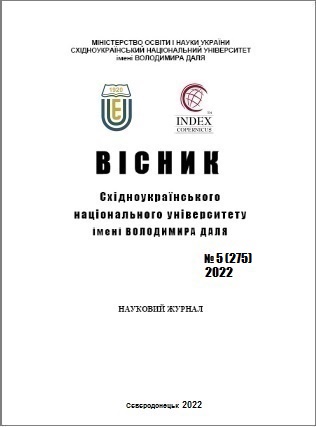Parallel implementation of the finite element method for the thermoelasticity problem
DOI:
https://doi.org/10.33216/1998-7927-2019-256-8-5-9Keywords:
finite element method, stiffness matrix, parallel computing, OpenMP, stress-strain stateAbstract
The article examines design calculations of constructions that require a comprehensive analysis of deformation processes under the action of operational loads. In real operating conditions, most structural elements are under the influence of mechanical and thermal loads. To analyze deformation processes, it is necessary to solve the problem of thermoelasticity. To solve such problems, the finite element method is usually used, the accuracy of which depends on the number of calculation nodes. One of the stages of solving problems of thermal elasticity is the formation of matrices of stiffness and thermal conductivity of finite elements. Moreover, for elements of the same type, calculations according to the same procedure are used, and the number of such calculations determines the time of solving the problem. In the traditional approach, these calculations are performed sequentially. In the case of large grid sizes, the number and time of calculations increase, which requires optimization of calculations using parallel calculation algorithms. The parallelization of the finite element method requires the management of the work of a sufficiently large number of processes, as well as the arrangement of data exchange between processes. The execution time of parallel calculations is determined by the slowest subtask. When forming the stiffness and thermal conductivity matrices, it is necessary to perform integration over the area of the finite element. Using the moment scheme of finite elements, displacement and deformation are approximated by the same polynomials, which simplifies the calculation of integrals. This procedure ends with the formation of a stiffness matrix block, and this block is partially shared by neighboring finite elements. In a shared memory system, information is exchanged between processors using variables stored in shared memory. Parallel programming algorithms have been developed for constructing stiffness matrices of finite elements and calculating the stress-strain state for the "MIRELA+" program package. Solutions for calculation grids of different sizes were obtained.The effect of parallelization on the calculation time was studied.
References
1. Карнаухов В. Г., Киричок И. Ф., Козлов В. И. Термо-механика неупругих тонкостенных элементов конс-трукций с пьезоэлектрическими сенсорами и актуато-рами при гармоническом нагружении. Прикладная ме-ханика. 2017. Т. 53, № 1. С. 9 – 74.
2. Киричок И. Ф. Радиальные колебания и виброразогрев вязкоупругих оболочечных элементов и их демпфиро-вание пьезоэлектрическими сенсором и актуатором. Прикладная механиа. 2016. 52, №4. С. 30 – 36.
3. Моделювання нелінійного деформування ортотропних циліндричних оболонок з отвором при врахуванні ек-сцентриситету його підкріплення / І. С. Чернишенко та ін. Доповіді Національної академії наук України. 2016. №1. С. 35 – 39.
4. Bazhenov V.A., Kozub Yu.G., Solodei I.I. Thermoelastici-ty of elastomeric constructions with initial stresses.Strength of Materials and Theory of Structures. 2020. Issue 104. Pp. 299 – 308.
5. Метод конечных элементов в вычислительном ком-плексе «МІРЕЛА+» / В. Киричевский та ін.; ред. В. Киричевский. Київ: Наук. думка., 2005. 402с.
6. Kozub Y. G. The durability of construction elements manufactured from low-compressibility elastomers. International Polymer Science and Technology. 2014.Vol. 41, No. 7.Pp. T/21 – T/25.
7. Жданов А.И., Богданова Е.Ю. Об одной вычислитель-ной реализации блочного метода Гаусса-Зейделя. Вестн. Сам.гос. тех.ун-та. Сер. Физ.-мат. науки. 2016. Т.20, №4. С. 730 – 738.
8. Попов А.В. Параллельные алгоритмы решения линей-ных систем с разреженными симметричными матри-цами. Проблеми програмування. 2008. № 2-3. С. 111 – 118.
9. Jarzebski P., Wisniewski K., Taylor R. L. On parallelization of the loop over elements in FEAP. Computijnal Mechanics, 2015. 56. Рр.77–86.
10. Ju S.H., Hsu H.H. An Out-of-Core Eigen-Solver with OpenMP Parallel Scheme for Large Spare Damped Sys-tem.Int. J.Computational Methods. 2019. Vol. 16. No. 7. URL:https://www.worldscientific.com/doi/abs/10.1142/S0219876219500385.
11. Bošanský M., Patzák B. Parallelization of assembly opera-tion in finite element method. Acta Polytechnica. 2020. 60(1). Pp.25–37.
12. Wozniak M., Bukowska A. Comparison of multi-frontal and alternating direction parallel hybrid memory igrm direct solver for non-stationary simulations Computer Science. 2020. 21(4). Pp. 419-439
13. Yamaguchi T., Kawase Y., Nagase A., Ishimura S. Per-formance Evaluation of 3-D Hybrid Parallel Finite Element Method by MPI/OpenMP J. Japan Society of Applied Electromagnetics and Mechanics. 2019. Vol.27. No.1. Pp.85-90.
14. Amorim L., Goveia T., Mesquita R., Baratta I. GPU Finite Element Method Computation Strategy Without Mesh Co-loring J. Microwaves, Optoelectronics and Electromagnetic Applications, 2020. Vol. 19. No.2. Pp. 252-264.
15. Atallah A.M., Younes A.B. Parallel Evaluation of Chebyshev Approximations :Applications in Astrodynamics J.Astro-nautical Science. 2022. Vol. 69. Рр. 692–717.

